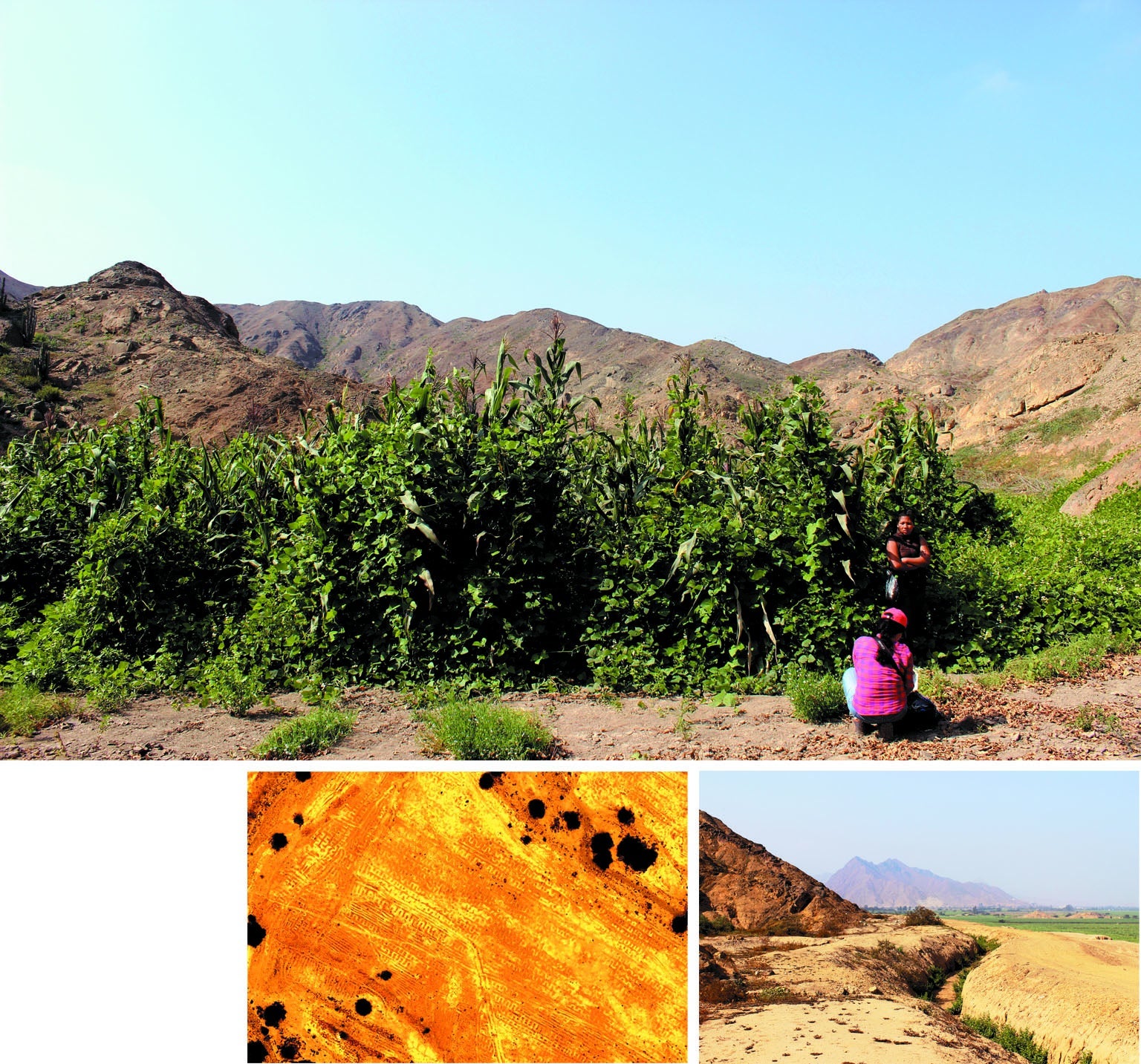Latin America
Related: About this forumAncient Peruvian Farmers Harnessed El Nino Floodwaters
Structures diverted the weather pattern’s floods to new farmlands 2,000 years ago
By Lakshmi Supriya | Scientific American January 2021 Issue

A modern-day field growing in water and sediment left in the aftermath of an El Niño event near Pampa de Mocan (top). Views of an ancient field and canals (bottom). Credit: Ari Caramanica (top and bottom right); Luis Jaime Castillo Butters (bottom left)
Peru's northern coast has one of the world's driest deserts, except for when El Niño drowns it with massive flooding. Rainwater from the nearby Andean foothills gushes down parched ravines, often tearing up modern agricultural fields in the sediment-rich plains of the desert's few rivers. Ari Caramanica, an archaeologist at the Universidad del Pacífico in Lima, had long been intrigued by what looked like lengthy, straight, ancient “structures” crisscrossing parts of this desert, which is called the Pampa de Mocan. Caramanica first noticed these strange lines in 1940s photographs. Now she and her colleagues say farmers built them in pre-Hispanic times as a sophisticated, flexible-use canal system—which usually used river water but harnessed the wild El Niño floodwaters when they came—to survive and prosper in a challenging environment.
El Niño events occur in irregular six- to 20-year cycles, and they are difficult to predict. But Caramanica and her team's new research suggests farmers working between a.d. 1 and 1476 were prepared. The scientists examined the Pampa de Mocan archaeological record to chart how these farmers benefited from El Niño floods; their research is reported in the Proceedings of the National Academy of Sciences USA.
By studying clues such as discarded agricultural tools, plant remains and field locations, the team determined that farmers selectively used the canals to direct El Niño floodwaters to fields farther from the rivers, beyond the reach of their typical river-water irrigation. Some of these fields were enclosed by low mounds that allowed water to collect. The ancient farmer-engineers also built small rock piles to slow the water's movement and to collect fertile silt.
Caramanica says she had initially assumed that the photographed structures were used for more common river-water agriculture. But her team found they had multiple roles—some even acting as fields themselves when El Niño damage cut them off from rivers. “They were being constantly patched together to take advantage of whenever and wherever water appeared,” she says
More:
https://www.scientificamerican.com/article/ancient-peruvian-farmers-harnessed-el-nino-floodwaters/
abqtommy
(14,118 posts)today.
Judi Lynn
(160,621 posts)It's a shame there is so much indifference now where there should be consciousness.